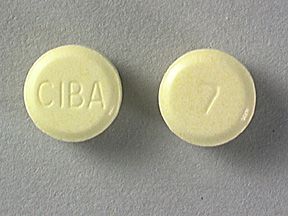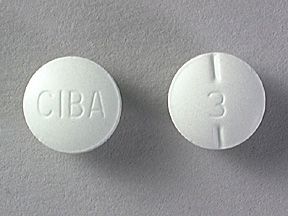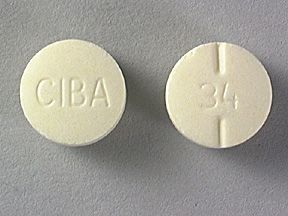Ritalin (methylphenidate) is a brand-name drug prescribed for attention deficit hyperactivity disorder and narcolepsy in adults and some children. It comes in two forms: Ritalin oral tablet and Ritalin LA extended-release oral capsule.
Specifically, the Food and Drug Administration (FDA) has approved Ritalin and Ritalin LA* for the following uses:
- Ritalin: to treat attention deficit hyperactivity disorder (ADHD) and narcolepsy in adults and children ages 6 years and older
- Ritalin LA: to treat ADHD in children ages 6–12 years
Ritalin belongs to a drug class called stimulants. Ritalin is available in a generic version.
Keep reading for specific information about the dosage of Ritalin, including its strengths and how to take the medication. For a comprehensive look at Ritalin, see this article.
Note: This article describes typical dosages for Ritalin provided by the drug’s manufacturer. When taking Ritalin, always follow the dosage prescribed by your doctor.
* Ritalin LA comes as an extended-release oral capsule. With extended-release, the drug releases slowly into your body over time.
Read on for more details about Ritalin’s dosage for its approved uses.
Ritalin forms
Ritalin comes in two forms: oral tablets (Ritalin) and extended-release oral capsule (Ritalin LA).
Ritalin strengths
Ritalin and Ritalin LA come in the following strengths:
- Ritalin:
- 5 milligrams (mg)
- 10 mg
- 20 mg
- Ritalin LA:
- 10 mg
- 20 mg
- 30 mg
- 40 mg
Typical dosages
Typically, your doctor will prescribe a low dosage at the beginning of treatment. This is your starting dosage. Then they’ll adjust it over time to reach the amount that’s right for you. Your doctor will ultimately prescribe the smallest dosage that provides the desired effect.
The following information describes dosages that are commonly prescribed or recommended. However, be sure to take the dosage your doctor prescribes for you. Your doctor will determine the best dosage to fit your needs.
Dosage for attention deficit hyperactivity disorder
The recommended starting dosage of Ritalin for attention deficit hyperactivity disorder (ADHD) in adults is 20–30 mg per day. The maximum daily dosage is 60 mg.
Dosage for narcolepsy
The recommended starting dosage of Ritalin for narcolepsy in adults is 20–30 mg per day. The maximum daily dosage is 60 mg.
Children’s dosage
Ritalin is approved to treat ADHD and narcolepsy in children ages 6 years and older. Ritalin LA is approved to treat ADHD in children ages 6–12 years. Your child’s doctor will determine the form and dosage of Ritalin that’s right for your child’s condition.
Children’s dosage for ADHD
If your child is 6–12 years old, your child’s doctor may prescribe Ritalin or Ritalin LA. If your child is 13 years or older, they’ll prescribe Ritalin.
Ritalin. The recommended starting dosage of Ritalin for ADHD is 5 mg taken twice per day. Your child will take their first 5-mg dose before breakfast and their second 5-mg dose before lunch. Your child’s doctor may increase their dosage by 5–10 mg each week if needed. The maximum daily dosage of Ritalin is 60 mg.
Ritalin LA. The recommended starting dosage of Ritalin LA for ADHD in children ages 6–12 years is 20 mg taken once per day. Your child’s doctor may increase their dosage by 10 mg each week if needed. The maximum dosage of Ritalin LA is 60 mg taken once per day.
Children’s dosage for narcolepsy
The recommended starting dosage of Ritalin for narcolepsy in children ages 6 years and older is the same as for ADHD: 5 mg taken twice per day. Your child will take their first 5-mg dose before breakfast and their second 5-mg dose before lunch. Your child’s doctor may increase their Ritalin dosage by 5–10 mg each week if needed. The maximum daily dosage of Ritalin is 60 mg.
Long-term treatment
Ritalin and Ritalin LA are meant to be taken as a long-term treatment. If you and your doctor determine that the medication is safe and effective for you, you’ll likely take it long term.
The dosage of Ritalin or Ritalin LA your doctor prescribes will depend on several factors. These include:
- the type and severity of the condition you’re taking Ritalin to treat
- the form of Ritalin you take
- your age
- other medical conditions you have
Talk with your doctor if you have questions about how they determine your dosage.
Ritalin is available as Ritalin oral tablet and Ritalin LA extended-release oral capsule. (Extended-release means the drug is long-lasting, releasing slowly into your body over time.)
If your doctor prescribes Ritalin, they may divide your total daily dose into two or three doses. You take these doses throughout the day, about 30–45 minutes before meals. If you have trouble falling asleep at night, they’ll advise you to take your last dose before 6 p.m.
It may be helpful to take Ritalin around the same time(s) of day. This helps maintain a steady level of the drug in your body so Ritalin can work effectively. For example, if you (or your child) take Ritalin before breakfast and lunch, take the drug at these times each day.
If your child is prescribed Ritalin LA, they take it once per day before breakfast. The capsule should be swallowed whole with a glass of liquid. If your child has trouble swallowing capsules, you can open the capsule and sprinkle the beads on a small amount of cold applesauce. Your child should swallow the applesauce mixture right away and should not chew the beads.
If you have trouble swallowing capsules or tablets, see this article for tips on how to take this form of medication. You can also talk with your doctor or pharmacist.
ACCESSIBLE DRUG LABELS AND CONTAINERSSome pharmacies offer labels with large print, braille, or a code you scan with a smartphone to convert text to speech. If your local pharmacy doesn’t have these options, your doctor or pharmacist might be able to recommend a pharmacy that does.
If you’re having trouble opening medication bottles, ask your pharmacist about putting Ritalin in an easy-open container. They also may recommend tools that can make it easier to open bottles.
If you miss a dose of Ritalin, take it as soon as you remember. If it’s almost time for your next dose, skip the missed dose. Do not take two doses at once to make up for the missed one. If you’re not sure whether to take or skip a missed dose, talk with your doctor or pharmacist.
To help make sure that you don’t miss a dose, try using a medication reminder. This can include setting an alarm or putting a note where you’ll see it, such as on your bathroom mirror or bedside table. You could also download a reminder app on your phone.
The active drug in Ritalin, methylphenidate, is a stimulant. Similar to other stimulant medications, Ritalin has a boxed warning about the risk of misuse and dependence. A boxed warning is the most serious warning from the Food and Drug Administration (FDA).
With misuse, a drug is taken in a way other than how a doctor prescribed it. And with dependence, your body needs the drug to function as usual. The risk of misuse and dependence with these medications may be higher in people who’ve ever had substance use disorder.
Symptoms of Ritalin abuse include:
- increased heart rate and blood pressure
- increased rate of breathing
- sweating or flushed skin
- dilated pupils
- restlessness or hyperactivity
- sleep problems
- loss of appetite
- shaking
- abdominal pain or vomiting
- anxiety
- aggression
- thoughts of harming yourself or others
Your doctor may discuss these risks before they prescribe Ritalin for you. And they may check in with you regularly while you’re taking the drug. If you experience any of the symptoms listed above, tell your doctor right away. They can advise whether you should continue taking Ritalin. They may also recommend a different treatment option for your condition.
Note: If you experience thoughts of suicide or harming yourself, tell your doctor right away or call 911 or your local emergency number. You can also refer to this article for ways to seek support.
If you take more Ritalin than your doctor prescribes, you may develop harmful effects.
It’s important that you do not take more Ritalin than your doctor advises.
Symptoms of an overdose
Ritalin overdose symptoms can include:
- nausea and vomiting
- diarrhea
- heart symptoms, such as increased heart rate or changes in heart rhythm
- changes in blood pressure
- shallow breathing
- sweating or flushed skin
- dilated pupils
- restlessness and agitation
- shaking or muscle twitching, including overactive reflexes
- rhabdomyolysis (muscle breakdown)
- anxiety
- convulsions
- euphoria (feeling of intense happiness)
- confusion
- seeing or hearing things that aren’t there
- headache
- fever
- dry eyes, mouth, or nose
If you take more than the recommended amount of Ritalin
Call your doctor right away if you believe you’ve taken too much Ritalin. Another option is to call America’s Poison Centers at 800-222-1222 or use its online tool. If you have severe symptoms, immediately call 911 or your local emergency number, or go to the nearest emergency room.
Below are some frequently asked questions about Ritalin and its dosage.
What is considered a high dose or low dose of Ritalin?
What’s considered a high dose and low dose of Ritalin depends on several factors. These include your age and the form of Ritalin you take. Doctors typically prescribe a low dosage at the start of Ritalin treatment.
For children, the usual starting dosage is 10 milligrams (mg) Ritalin or 20 mg Ritalin LA per day. For adults, the starting dosage is 20–30 mg Ritalin per day. However, your (or your child’s) doctor may prescribe a higher dosage to help manage your condition. The maximum daily dosage of Ritalin and Ritalin LA is 60 mg.
To learn about Ritalin forms, strengths, and dosages, see the “Ritalin dosage” section above for details. If you have questions about this, talk with your doctor or pharmacist for more information.
Can Ritalin be used for depression? If so, what’s the dosage?
Possibly. Ritalin as a treatment for depression hasn’t been approved by the Food and Drug Administration (FDA). However, the drug may be prescribed off-label for depression. Off-label drug use is when an FDA-approved drug is prescribed for a purpose other than its approved one. Ritalin is FDA approved to treat attention deficit hyperactivity disorder and narcolepsy in adults and some children.
If your doctor recommends Ritalin for your condition, they’ll prescribe the dosage that’s right for you.
The dosages in this article are typical dosages provided by the drug’s manufacturer. If your doctor recommends Ritalin, they’ll prescribe the dosage that’s right for you. Always follow the dosage your doctor prescribes.
As with any drug, never change your dosage of Ritalin without your doctor’s recommendation. If you have questions about the dosage of Ritalin that’s best for you, talk with your doctor.
Besides learning about dosage, you may want other information about Ritalin. These additional articles might be helpful:
- More about Ritalin. For information about other aspects of Ritalin, refer to this article.
- Details about your condition. For details about your condition, see our attention deficit hyperactivity disorder hub.
Disclaimer: Medical News Today has made every effort to make certain that all information is factually correct, comprehensive, and up to date. However, this article should not be used as a substitute for the knowledge and expertise of a licensed healthcare professional. You should always consult your doctor or another healthcare professional before taking any medication. The drug information contained herein is subject to change and is not intended to cover all possible uses, directions, precautions, warnings, drug interactions, allergic reactions, or adverse effects. The absence of warnings or other information for a given drug does not indicate that the drug or drug combination is safe, effective, or appropriate for all patients or all specific uses.



